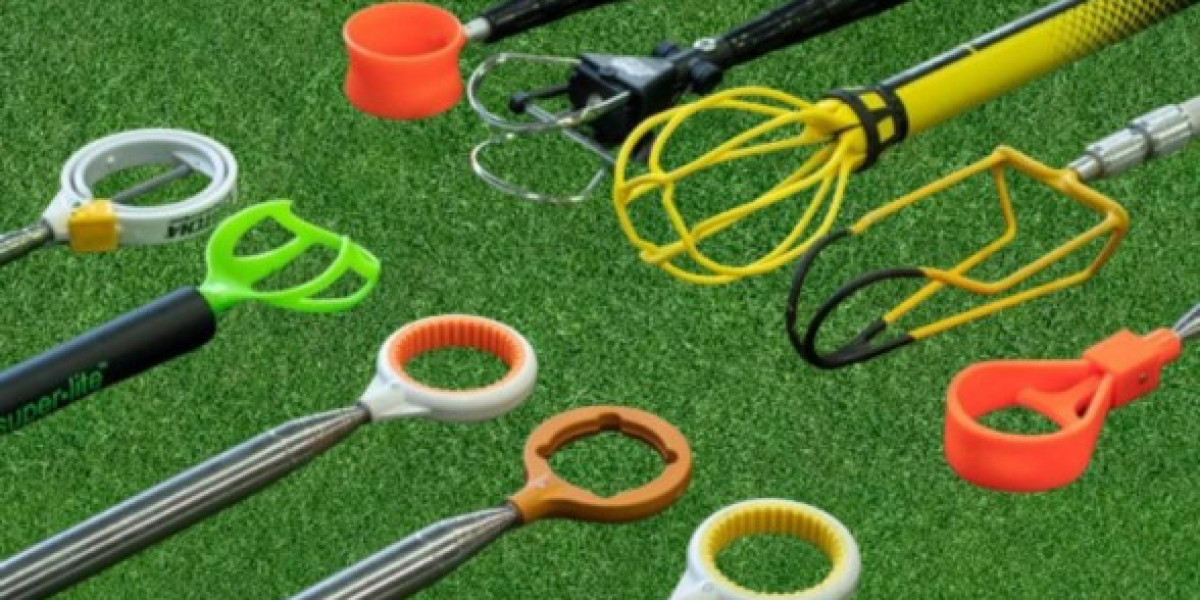Golfing is a game of precision, skill, and sometimes, a bit of misdirection. Despite one's best efforts, golf balls often find themselves in the most unexpected places—whether nestled in a water hazard, tangled in thick rough, or lost amidst dense foliage. To combat this, golf ball retrievers have become an indispensable tool for golfers of all skill levels. These handy gadgets come in various types, each designed to tackle different scenarios on the course. Let's delve into the world of golf ball retrievers, exploring their types and the benefits they offer to golfers.
1. Traditional Golf Ball Retriever:
The traditional golf ball retriever resembles a telescopic pole, typically made of lightweight materials such as aluminum or fiberglass. It features a grip handle at one end and a mechanism at the other end to secure the retrieved golf ball. These retrievers extend to reach balls submerged in water hazards or nestled in difficult-to-reach areas on the course. With lengths ranging from a few feet to over twenty feet, golfers can choose a retriever that suits their needs based on the layout of the course they're playing.
Benefits:
- Versatility: Traditional retrievers can be used in various terrains, including water hazards, bushes, and thick rough.
- Lightweight: Their construction from lightweight materials ensures ease of use and portability.
- Extendable: The telescopic design allows golfers to adjust the length of the retriever based on the situation, maximizing reach without sacrificing control.
2. Suction Cup Golf Ball Retriever:
Suction cup golf ball retrievers offer a unique solution for retrieving balls from water hazards. These retrievers feature a telescopic pole like their traditional counterparts but have a suction cup mechanism at the end instead of a cage or scoop. Golfers simply place the suction cup over the submerged ball, creating a seal, and then lift the retriever to bring the ball to the surface.
Benefits:
- Water Hazard Mastery: Suction cup retrievers excel at retrieving balls from water hazards without disturbing the surrounding environment.
- Easy to Use: Their simple design makes them easy to use, even for beginners.
- Minimal Damage: By gently lifting the ball from the water, suction cup retrievers reduce the risk of damaging delicate course features or disturbing wildlife.
3. Ball Retriever Cart Attachment:
Ball retriever cart attachments provide a convenient solution for golfers who prefer to ride in a golf cart while playing. These attachments feature a mechanism to hold the retriever securely on the cart, ensuring quick access whenever needed. With a simple pull or push, golfers can deploy the retriever to grab balls from water hazards or retrieve stray shots without the need to dismount from the cart.
Benefits:
- Convenience: Golfers can retrieve balls without having to leave the comfort of their cart, saving time and energy.
- Accessibility: Having the retriever readily available on the cart eliminates the need to carry it separately or attach it to a golf bag.
- Improved Pace of Play: Quick and easy ball retrieval from the cart helps maintain a steady pace of play, keeping the game enjoyable for all players on the course.
4. Automatic Golf Ball Retrievers:
Automatic golf ball retrievers represent the pinnacle of convenience in ball retrieval technology. These innovative devices feature motorized mechanisms that extend, retrieve, and retract the ball with the push of a button or the flip of a switch. Equipped with sensors and advanced mechanisms, automatic retrievers streamline the process of collecting balls from water hazards or hard-to-reach areas, making them ideal for golfers who prioritize efficiency and ease of use.
Benefits:
- Effortless Retrieval: Automatic retrievers eliminate the need for manual extension and retraction, requiring minimal effort from the golfer.
- Precision: Built-in sensors ensure accurate positioning for retrieving balls, reducing the risk of missing or damaging them during retrieval.
- Time-saving: The automated operation of these retrievers significantly reduces the time spent on ball retrieval, allowing golfers to focus more on their game.
In conclusion, golf ball retrievers come in various types, each offering unique benefits to golfers seeking to retrieve lost balls on the course. Whether it's navigating water hazards, dense rough, or other challenging terrain, there's a retriever designed to meet every golfer's needs. By incorporating the right type of retriever into their arsenal, golfers can enhance their playing experience, save time, and focus on what matters most—enjoying the game of golf.For more information



